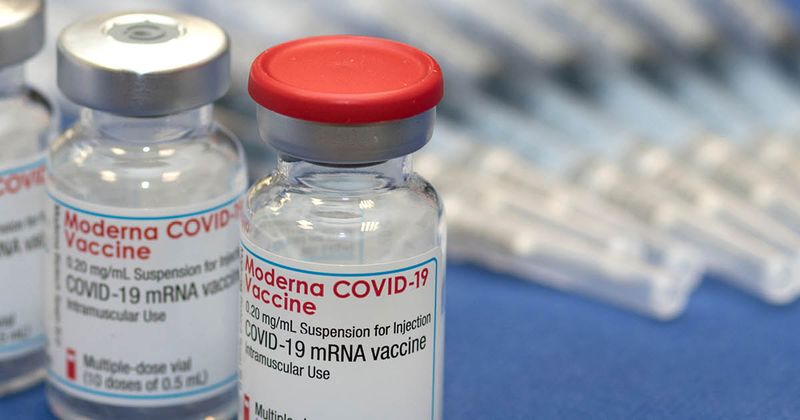FDA committee unanimously backs Moderna vaccines for children, adolescents
An FDA advisory committee on Tuesday unanimously backed Moderna’s COVID-19 vaccines for children and adolescents aged 6 to 17 years.
Members of the Vaccines and Related Biological Products Advisory Committee (VRBPAC) voted 22-0 to recommend that the FDA amend Moderna’s emergency use authorization (EUA) to make the company’s vaccine available for a pediatric population for the first time, saying the benefits outweigh the risks.

The FDA will now consider the VRBPAC’s recommendations. The EUAs would be for a two-dose series for adolescents aged 12 through 17 years at 100 g per dose and a two-dose series at 50 g per dose for children aged 6 through 11 years of age. Moderna’s vaccine is already approved for adults.
Last October, the FDA announced that it was delaying its decision on Moderna’s application for an EUA for children aged 12 to 17 years in the U.S. over concerns regarding myocarditis and pericarditis.
In a presentation Tuesday, the CDC’s Tom Shimabukuro, MD, MPH, MBA, said there is some evidence to suggest that the risk for myocarditis and pericarditis from either of the messenger RNA vaccines in groups where the products can be compared (namely, adults aged 18 to 39 years) may be higher after the Moderna shot than the Pfizer-BioNTech shot, but that the findings are not consistent in all U.S. monitoring systems. The Pfizer-BioNTech vaccine is already authorized for children as young as aged 5 years.
Briefing materials released ahead of Tuesday’s meeting said there were no confirmed cases of myocarditis or pericarditis among participants aged 6 months through 17 years in Moderna’s studies.
In the Moderna KidCOVE trial, the vaccine was estimated to be 88% effective among children aged 6 to 11. FDA briefing materials released ahead of the meeting reported it to be 100% effective among adolescents and teens aged 12 to 17 years according to the study’s case definition, and 93.3% effective when using a broader CDC case definition.
VRPBAC members, including Healio Pediatrics Editorial Board Member Paul Offit, MD, director of the Vaccine Education Center at The Children’s Hospital of Philadelphia, said data indicating that the Moderna vaccine is more effective after a third dose show an extra dose will be needed in the pediatric population.
Children are already eligible to receive a booster shot of Pfizer’s vaccine, but Offit cautioned that the CDC, whose own advisory committee will meet later this week to make clinical recommendations for the Moderna vaccine, should not call this one a “booster” dose.
“Please make sure that this two-dose series is not described as being fully vaccinated, and that the third dose is simply described as being up to date or a booster,” Offit said. “You need ... the third dose to get protection against omicron.”
Peter W. Marks, MD, PhD, director of the FDA’s Center for Biologics Evaluation and Research and a nonvoting participant in the meeting, thanked the committee for their decision.
“The hope here is that by making available vaccines, we will protect the population,” Marks said. “I think it's then a matter of individuals here understanding and making a choice about what degree of risk they are willing to take, especially as we move into this children's vaccine area. ... But that, I think, is why we provide the information and why ultimately CDC will consider this and whatever we come out with as a decision and make their recommendation.”
The VRBPAC will reconvene Wednesday to discuss Moderna and Pfizer’s EUA applications for children aged 5 years and younger.
As of June 9, the CDC reported that approximately 8.2 million children aged 5 to 11 years in the U.S. had received two doses of the Pfizer-BioNTech vaccine, representing just 29% of that population. An additional 1.9 million received one dose. Numbers were better for children aged 12 to 17, with 14.8 million completing their vaccination series, or 59% of that population, and an additional 2.4 million receiving only one dose.
According to the AAP, more than 87,644 new pediatric COVID-19 cases were reported in the U.S. during the week ending June 9, representing 635,980 of the weekly reported cases.

